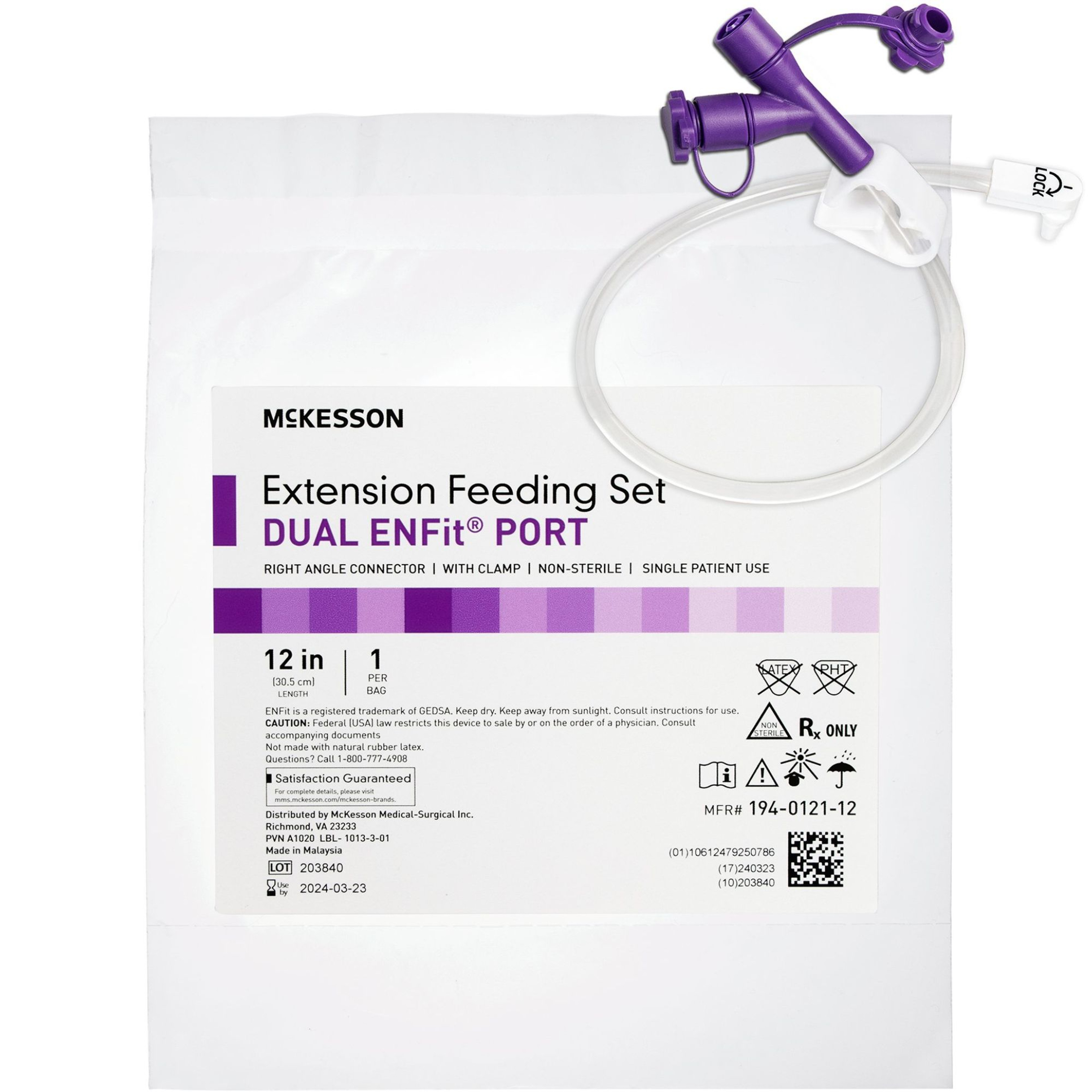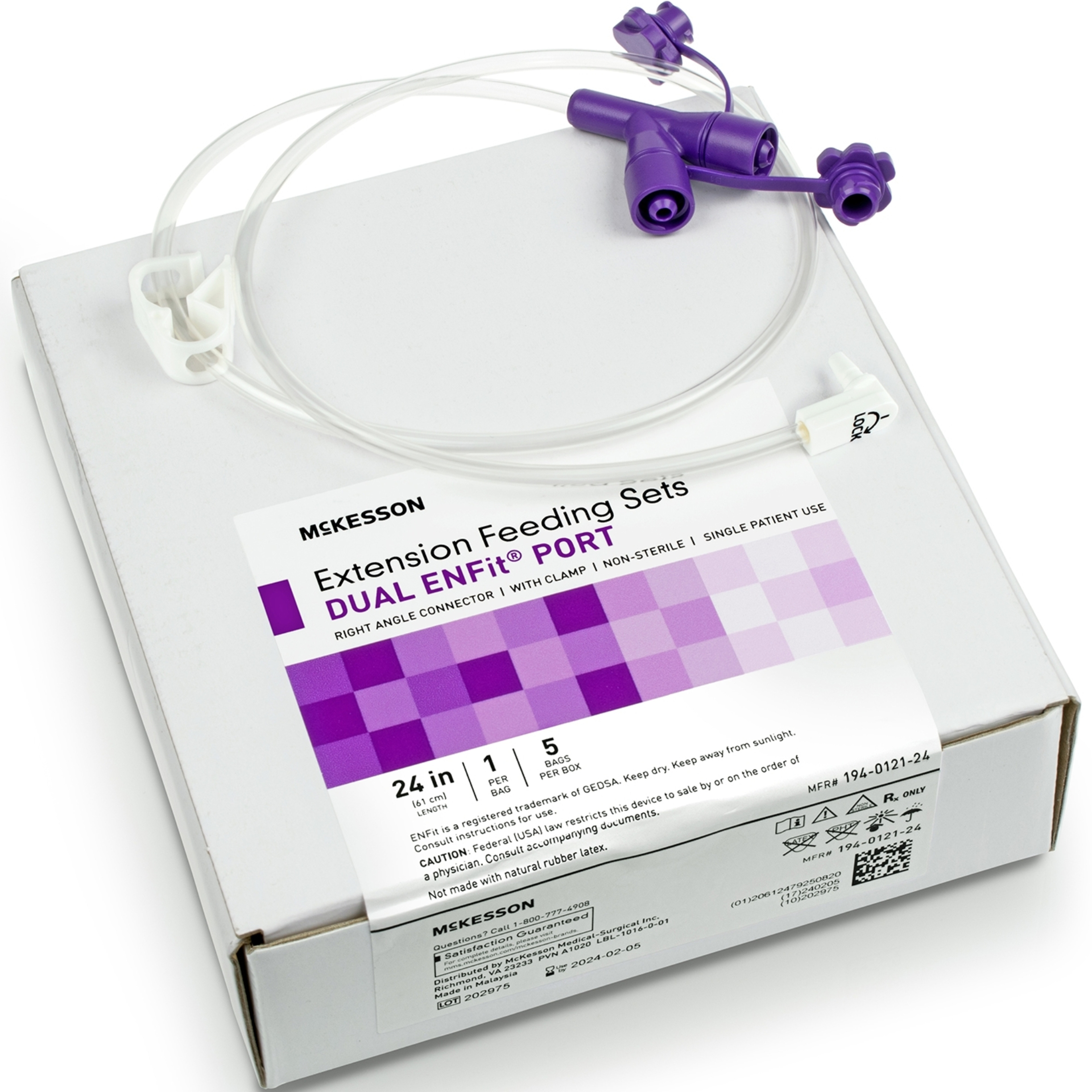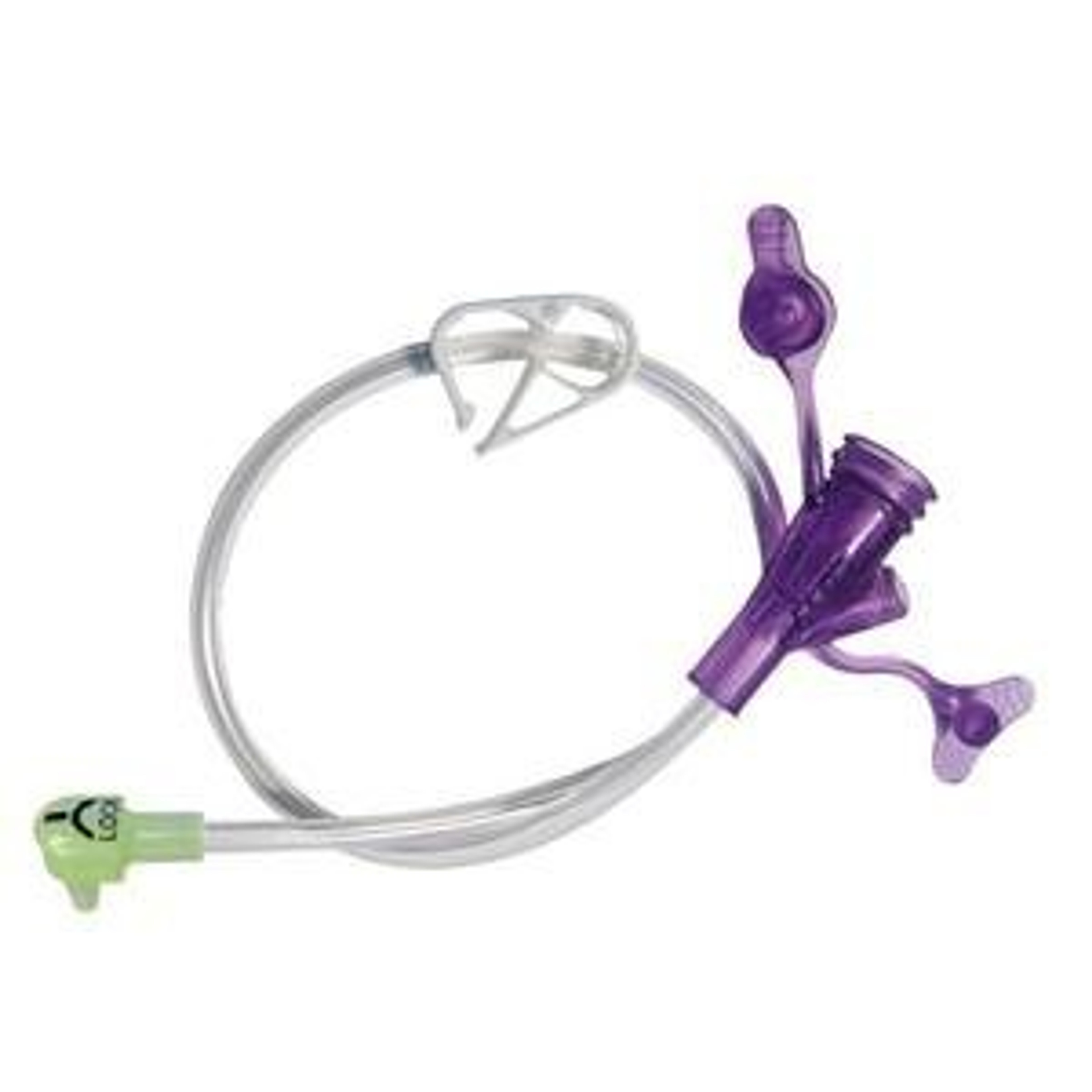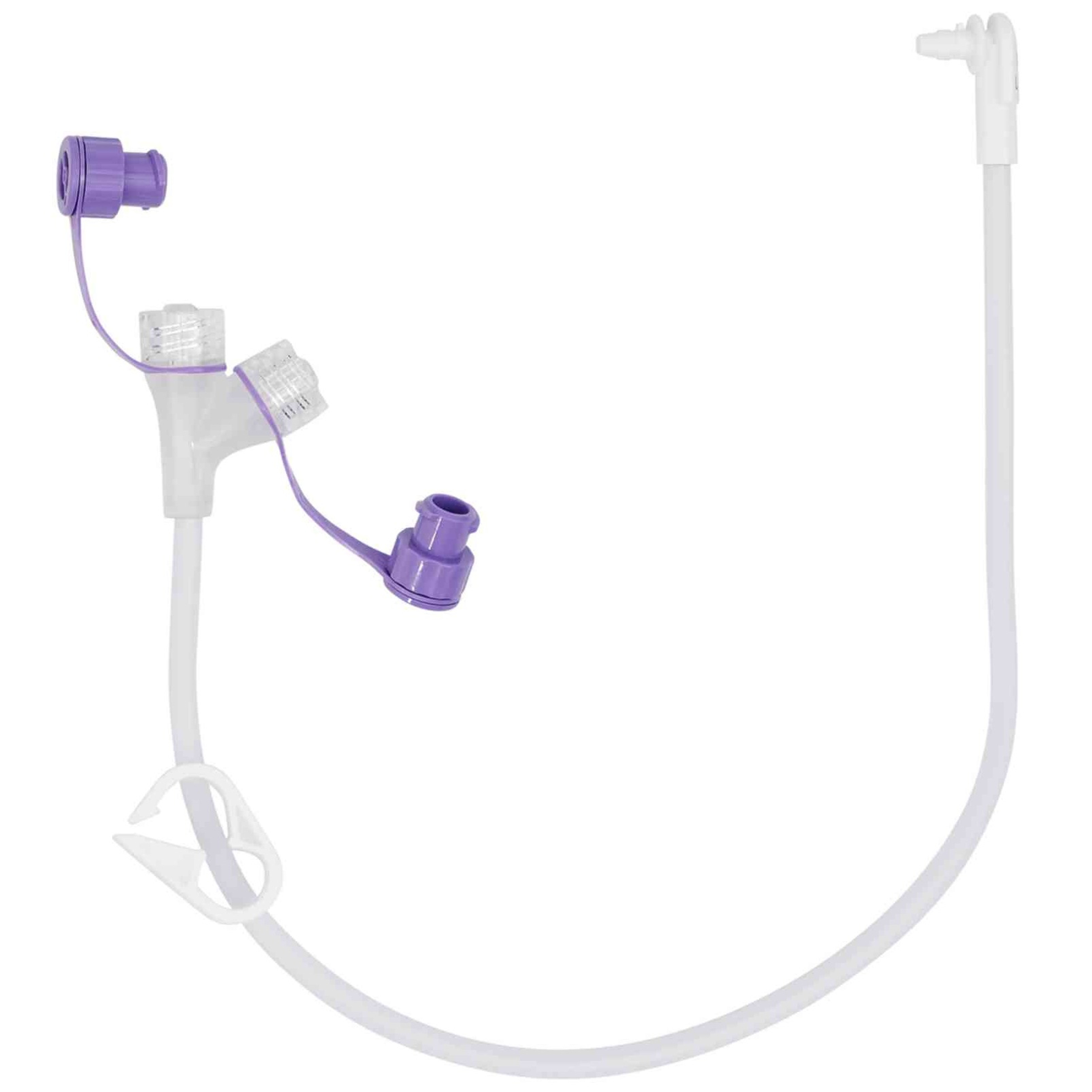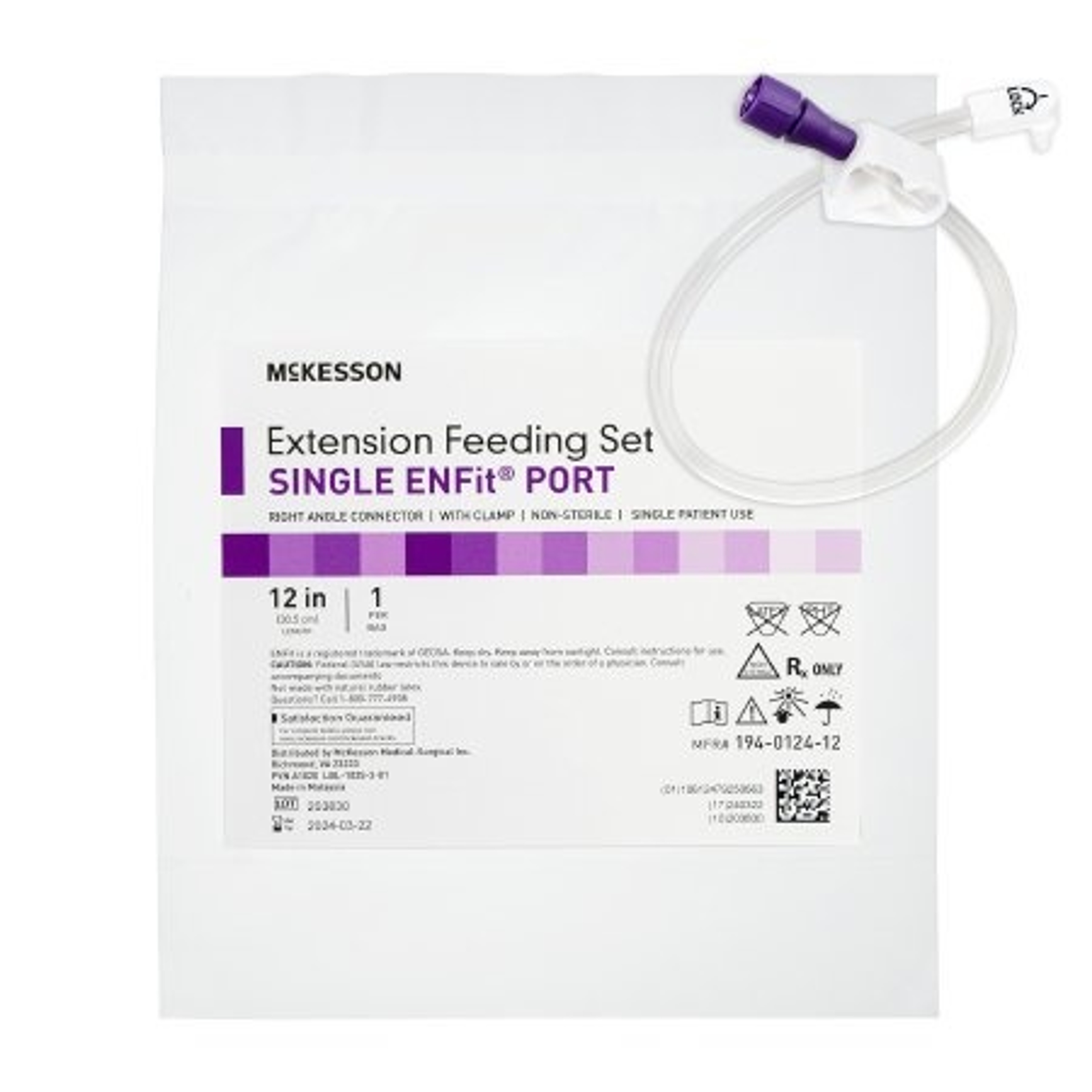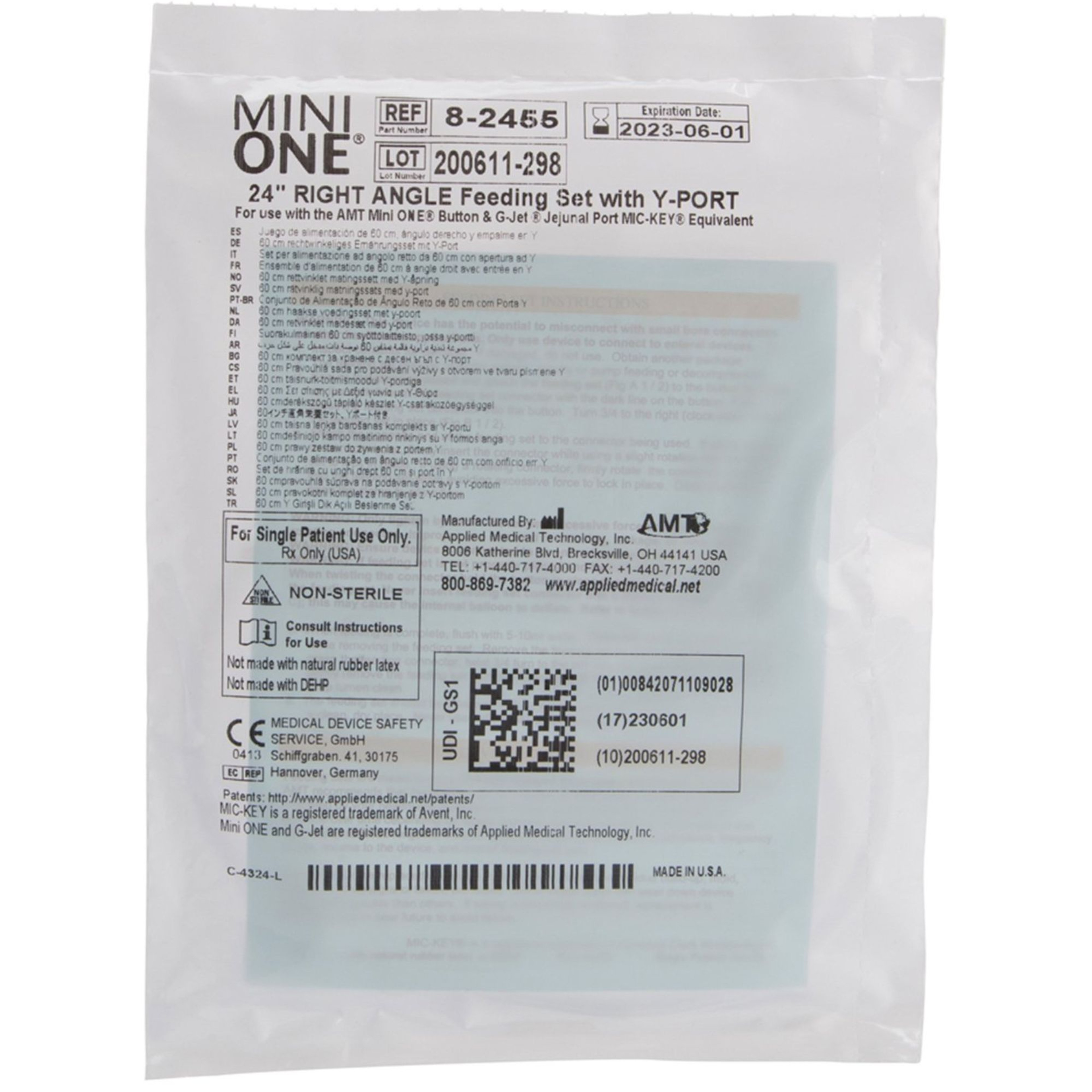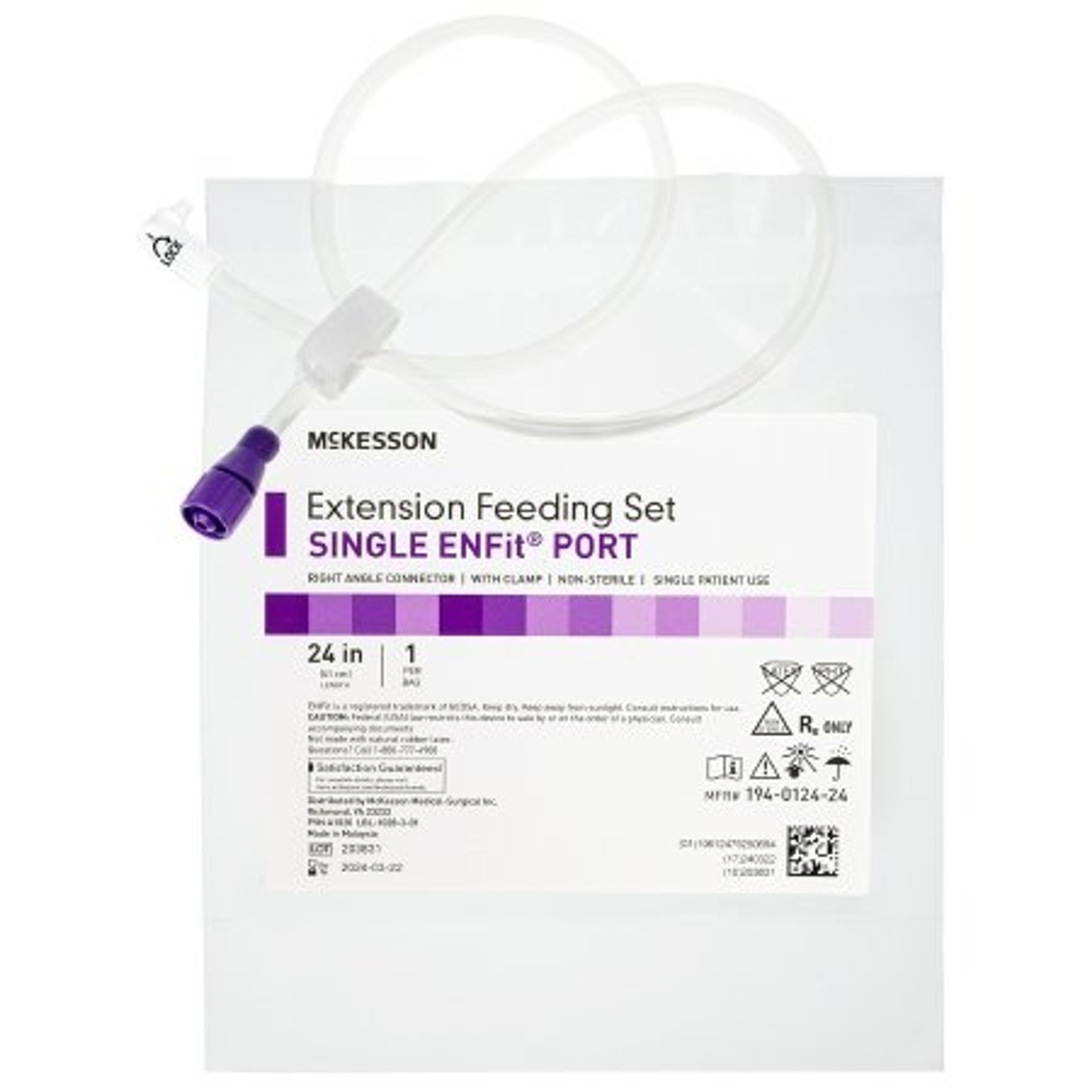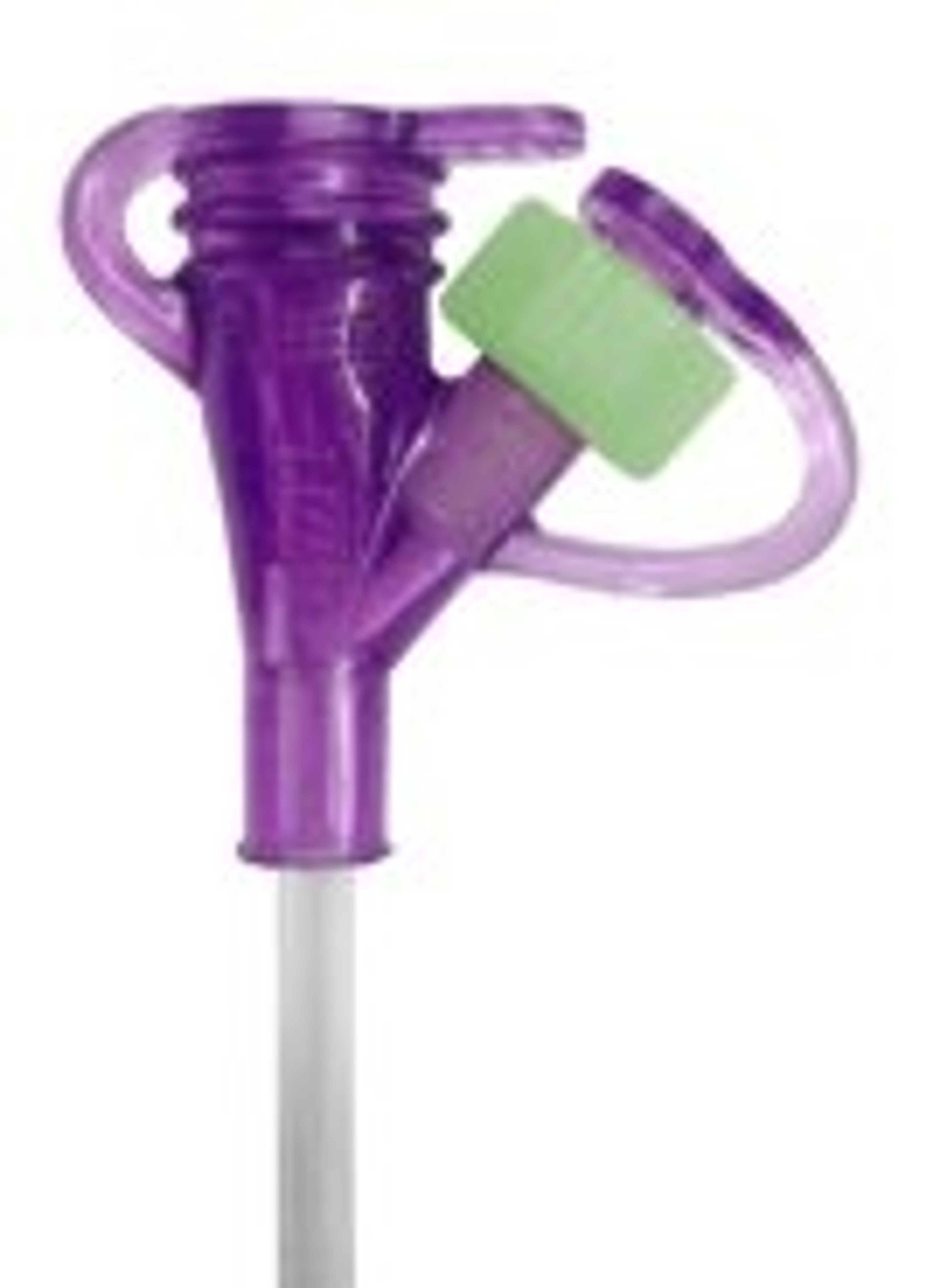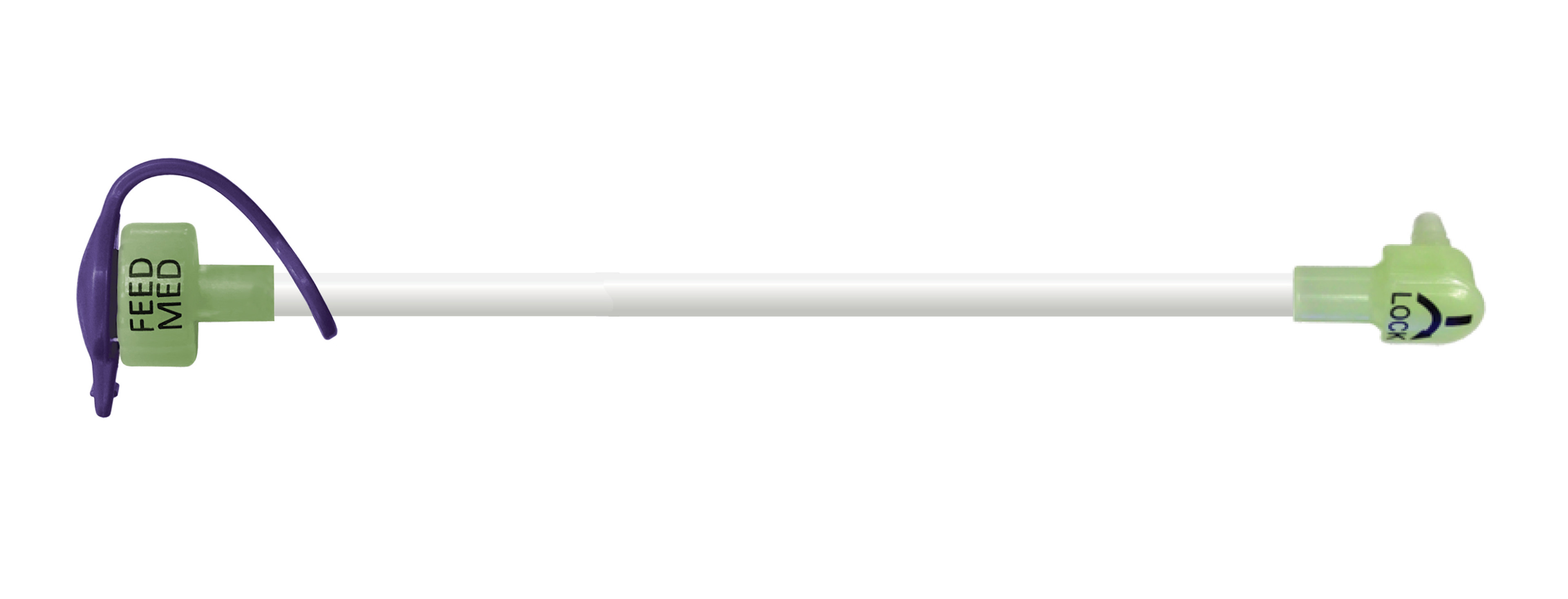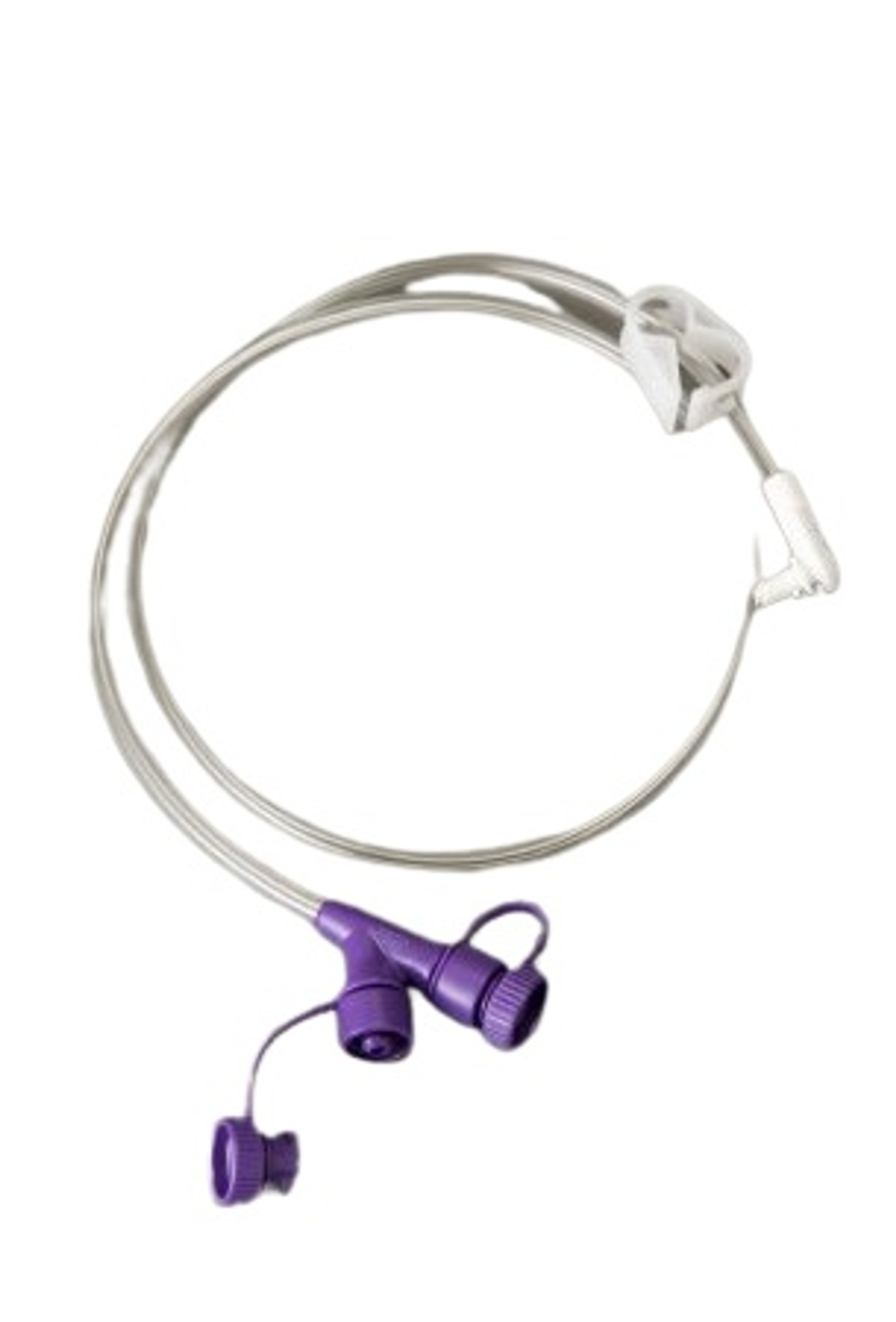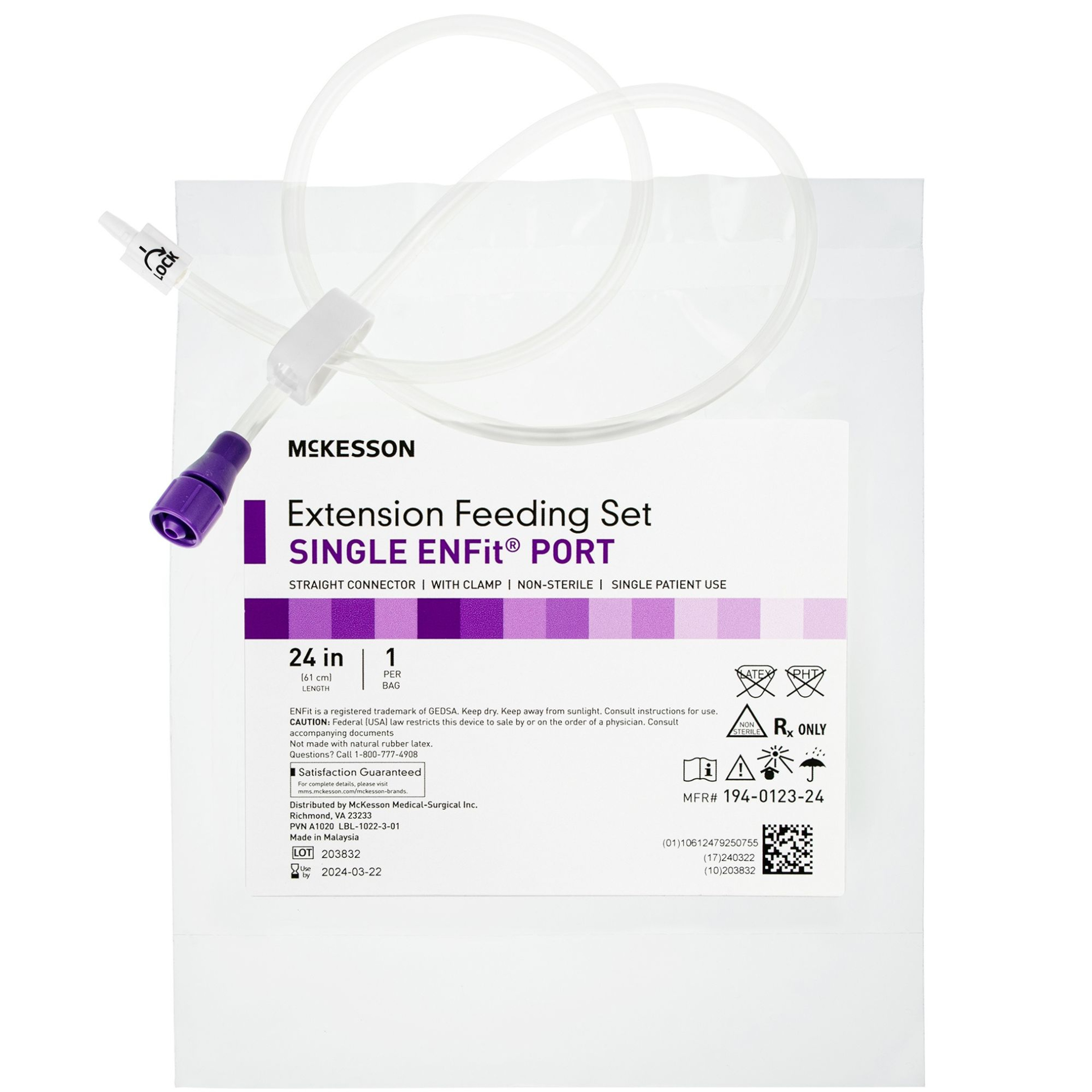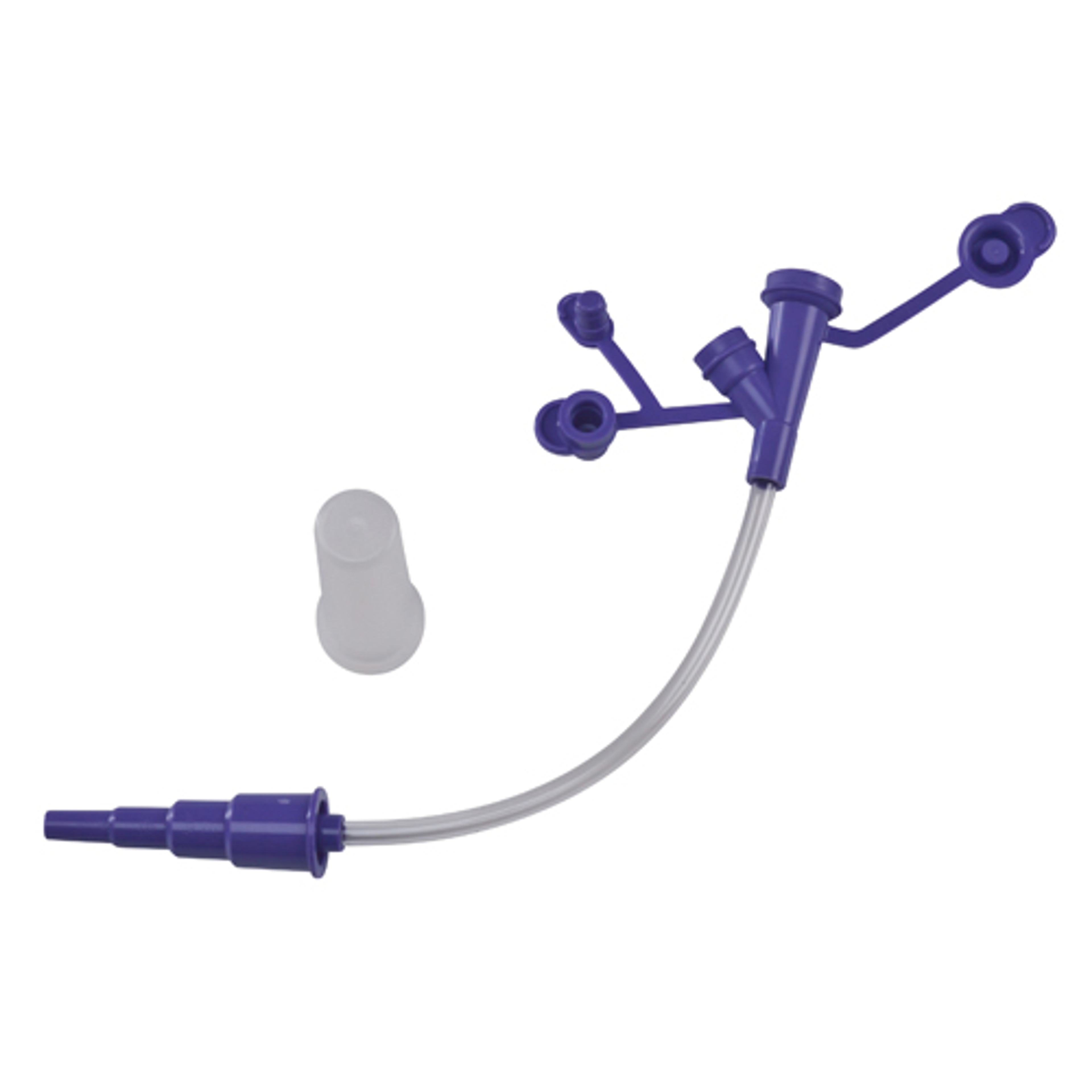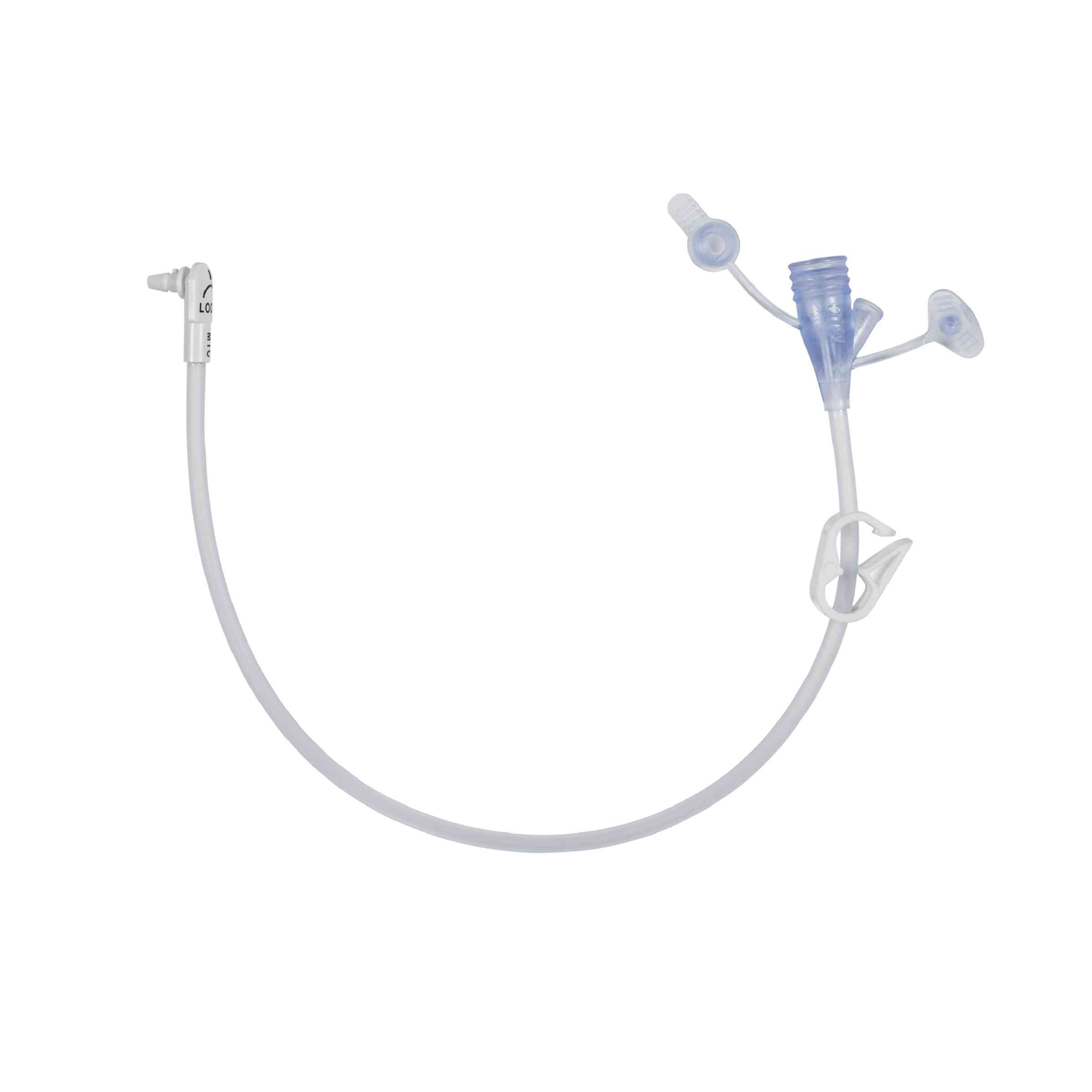About Micro G-JET 12" Right Angle Dual ENFit Y-Port Feed Set
A gastric-jejunal feeding device is inserted through the abdominal wall and into the stomach. Unlike a g-tube, which ends in the stomach, a gastric-jejunal feeding device travels into the stomach, through the pylorus, and ends in the small intestine.
The micro G-JET was designed to meet the enteral nutrition needs of pediatric patients. The micro G-JET transitions from a 14F gastric segment to an 8F jejunal segment. The 8F jejunal tubing is well-suited for the narrow lumen of the small intestine in pediatric patients and was designed to reduce digestive problems associated with sustained pyloric opening, such as reflux and potential aspiration of bile or chyme.
The AMT micro G-JET is the ONLY low profile gastric-jejunal feeding device with an 8F jejunal segment.
Key Benefits & Features
- Low Profile Bolster: Clearly labeled G + J Ports, Featuring Glow Green Technology
- Exclusive AMT Balloon: The balloon you trust, adapted for smaller stomachs
- 8F + Anti-Kink Protection: Anti-Kink coil spans the entire 8F jejunal segment
- Soft Tip: Gentle, atraumatic
Micro G-JET 12" Right Angle Dual ENFit Y-Port Feed Set FAQs
How does the Micro G-JET device work?
- The micro G-JET is a low profile gastric-jejunal enteral feeding tube, also known as a GJ-Tube.
- A GJ-Tube, like the micro G-JET, is recommended for people who cannot eat by mouth and have a stomach that does not work properly. These patients need to use the small intestine to get nutrition to the body – the GJ-Tube allows them to do that!
- The GJ-Tube is placed through the belly, or abdominal wall. The full length of the GJ-Tube extends from the abdominal wall, through the stomach, and into a part of the small intestine called the jejunum.
- The GJ-Tube has two ports: the gastric port (g-port) goes to the stomach and is most commonly used for delivering medication, draining excess fluids, or venting air; the jejunal port (j-port) goes to a section of the small intestine called the jejunum and is used to deliver nutrition.
- You can think of the GJ-Tube as being two tubes in one. The first tube ends in the stomach, and the second tube ends in the small intestine (specifically, the jejunum).
- The phrase “low profile” means that the external portion of the device, often called the bolster, is very flat or flush against the skin. Low profile GJ-Tubes, like the micro G-JET, are sometimes called a button.
What are the flushing recommendations for the Micro G-JET?
AMT recommends flushing the micro G-JET every 4 hours with 1-2 ml of water (or amount prescribed by the healthcare team) during continuous feeding to avoid clogging and to maintain tube patency. DO NOT USE FORCE.
- Use a 30 to 60 ml syringe. Do not use smaller size syringes as this can increase pressure on the tube and potentially damage smaller tubes.
- Use room temperature tap water for tube flushing. Sterile water may be appropriate where the quality of municipal water supplies is of concern.
- The amount of water will depend on the patient’s needs, clinical condition, and type of tube – the average volume ranges from 10 to 50 ml for adults, and 3 to 10 ml for infants.
- Hydration status also influences the volume used for flushing feeding tubes. In many cases, increasing the flushing volume can avoid the need for supplemental intravenous fluid. However, individuals with renal failure and other fluid restrictions should receive the minimum flushing volume necessary to maintain patency.
- Flush the feeding tube before and after medication administration and between medications. This will prevent the medication from interacting with formula, potentially causing the tube to clog. Use liquid medication when possible and consult the pharmacist to determine if it is safe to crush solid medication and mix it with water. If safe, medication should be crushed as fine as possible (into powder form) and dissolved into water before administering through the device. Never crush enteric-coated medication or mix medication with formula. Avoid using acidic irrigants such as cranberry juice and cola beverages to flush feeding tubes, as the acidic quality combined with formula proteins may actually contribute to tube clogging.
- Do not use excessive force to flush the tube. Excessive force can damage the tube and can cause injury to the gastrointestinal tract.
- Document the time and amount of water used in the patient’s record. This will enable all caregivers to monitor the patient’s needs more accurately.
There is leaking around the Micro G-JET; what should I do?
There are many reasons why the micro G-JET might leak. Some of the most common reasons include:
- Low Water Level in the Balloon. Make sure the balloon is filled with the correct amount of water (resistance should be felt when gently pulling on the tube.) NOTE: The recommended amount of water for the balloon is printed on top of the balloon fill valve. If you have questions, contact your healthcare provider.
- Incorrectly Sized Device. If the micro G-JET feels too tight or too loose, make sure that the French size and stoma length match what is prescribed by your healthcare provider. If the wrong device is in place, contact your provider.
- It is important to have your stoma site re-measured on a regular basis, especially if you are still growing or have lost/gained weight recently. Changes to your body may impact the size of the device you need. If you are not experiencing changes to your body, the stoma site should still be measured every 6-12 months for optimal device performance.
- Newly Placed micro G-JET. For new placements, it may take time for the stoma tract to naturally heal and firm up around the tube and the balloon. If leakage continues, contact your healthcare provider.
The feed set disconnected from the Micro G-JET; what should I do?
Immediately stop the feeding pump, clamp off all extension tubing, and thoroughly clean the micro G-JET feed port and the feed set connector with soap and water. CLEAN THE INSIDE OF THE FEED SET AND THE DEVICE FEEDING PORT WITH A CLEAN COTTON SWAB AND SOAP AND WATER. Dry the connector and then reconnect the feed set. You may want to add a small amount of extra formula to make up for what was lost and continue the feeding.
What is the MR status of the Micro G-JET?
- The micro G-JET is considered MR Conditional, which means that the tube has metal present within it – but has undergone testing to show that, under specific conditions, it is safe for a patient with a micro G-JET to have an MRI. The specific MRI conditions are listed on the device safety card included in the product packaging.
- NOTE: AN MR (MAGNETIC RESONANCE) ENVIRONMENT SAFETY CARD HAS BEEN PLACED IN THE DEVICE KIT. PLEASE KEEP THE CARD WITH YOU FOR YOUR RECORDS. THIS CARD CAN BE GIVEN TO YOUR RADIOLOGIST IF A MRI IS NEEDED.
